
Friday October 29, 2004

Friday October 29, 2004
Scalextric Sport Digital System
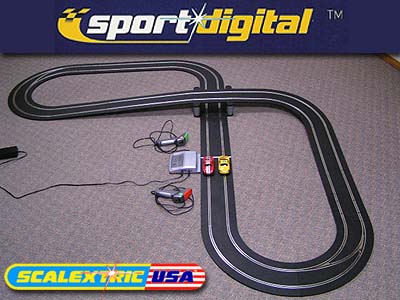 With the holiday season fast approaching, the Digital
Racing Systems are certain to catch the eye of many new, and perhaps veteran
enthusiasts. The Scalextric system is one that many feel has great possibilities
and I was very eager to try one of these systems to see if all I heard about
was true. Thanks to Scalextric USA we have a pre-production sample to test, so
let's dive in and see just how much fun this
system can be.
With the holiday season fast approaching, the Digital
Racing Systems are certain to catch the eye of many new, and perhaps veteran
enthusiasts. The Scalextric system is one that many feel has great possibilities
and I was very eager to try one of these systems to see if all I heard about
was true. Thanks to Scalextric USA we have a pre-production sample to test, so
let's dive in and see just how much fun this
system can be.
First and foremost, I am approaching this system just as I did with the
Carrera offering: As a beginner. This set will certainly fall into the hands of
newcomers this year and in my opinion it is important to evaluate the system
accordingly. It is easy for me to approach it like this because I truly am a
beginner and by no means an expert in exactly how a digital set accomplishes what it
does. I simply expect it to function out of the box as most any consumer would.
Our traditional slot car sets today are all pretty much plug and play and I
expected this set to be the same.
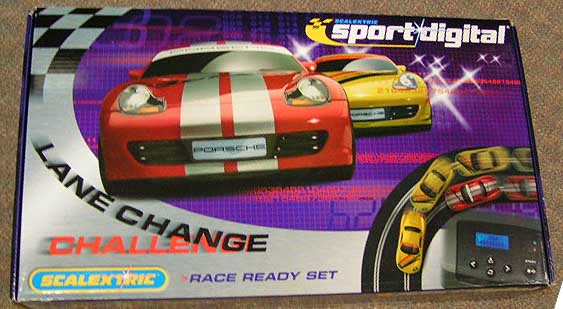
Informative and clear instructions are critical to a set like this. The ones I have are not the originals, merely copies due to the fact this system is after all just a sample. Because these are not the originals, they may not be what we find in the box. Although these copied instructions do not explain every feature, they were enough to explain basic car setup and some of the race features. In just over 2 weeks from now, the digital systems will be shipping and I will have a new set with all original instructions that will allow me to go more in depth in the features of the system.
One main feature of the Scalextric system is that it allows you to race with up to 6 racers on the same 2 lane track. Some people feel that 6 racers is too many, while others appreciate the larger field. I cannot say with this small of a layout that 6 racers would really be that much fun, simply because I only have 2 cars. My experience with other systems with only 4 cars do tell me that things will get mighty busy with 6 racers unless you have a large enough layout to accommodate them.
Assembly
Assembly is all tried and true Scalextric Sport track. The track locks together cleanly and you should be able to assemble the complete layout in around 15 minutes. There are some pieces of track that must be assembled as directed, so make sure you just follow the instructions and you should have no problem. These specialty pieces include the sensor tracks and the lane changing crossovers. The half straight that has the sensors in it needs to be placed before the crossover for it to function normally. You will know which one by the jacks on the lane changing crossovers and the half straight will have female jacks to accommodate it.
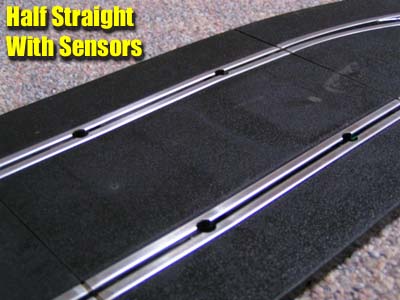
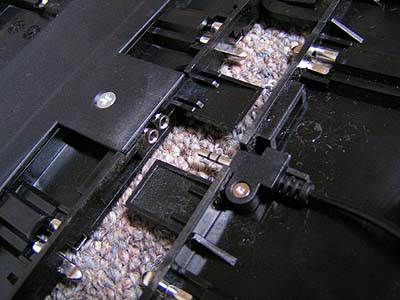
Power
The power base and power supply are all brand new just as the controllers are. On the side of the power base you can see hook-ups for an additional 4 controllers for a total of 6, and an extra power supply jack to help boost the power for running this many models at once. The AUX port is for the connection of accessories to the Sport Digital range. The power supply is a very bright spot for me personally, because for too long I have seen slot car manufactures in our hobby pump too much voltage to our little Mabuchi motors, while starving them for amperage.
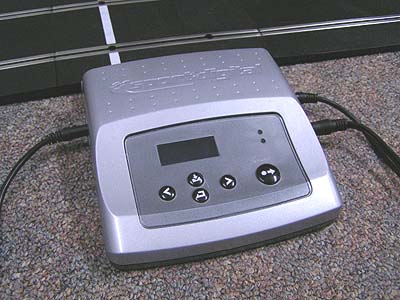
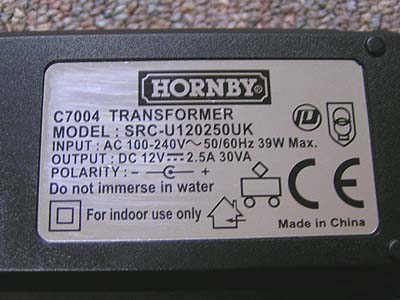
This new supply is rated at 12 volts DC and 2.5 amps. This is more than enough amps for 2 to 3 models to run very well without having a very noticeable burst of speed when another model de-slots. I do not have any extra cars or power supply to test how 6 models would react, but I am sure I will in the near future. However, out of the box both the Porsches included in the set functioned just fine.
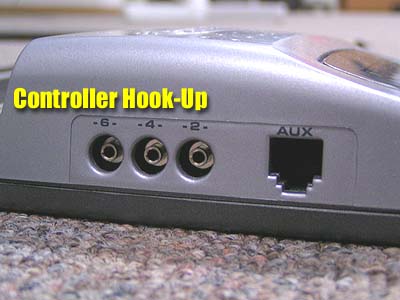
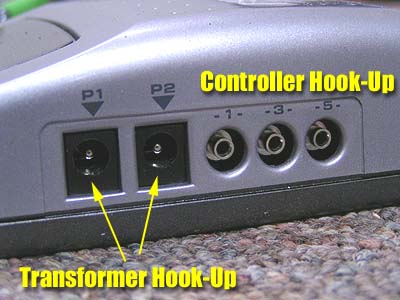
The Cars
I was not surprised to see these Porsches chosen for initial digital set. These models in their traditional form are not only very fast due to their light weight and strong bar magnet, but they are VERY durable. Believe me when I tell you that you will come to love these models for their durability factor in hard crashes. The cars themselves have a circuit board and sensor that connect inside the chassis as the photo shows. The sensor is visible on the underneath of the model. It will be important to keep this sensor eye clean and free of any obstructions in order for it to function normally. This sensor relays your commands to change lanes at the sensor track.
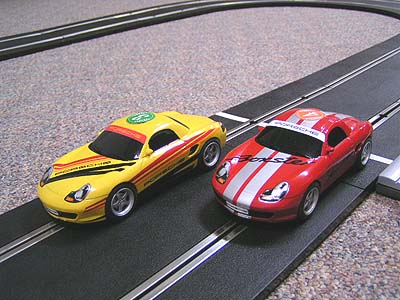
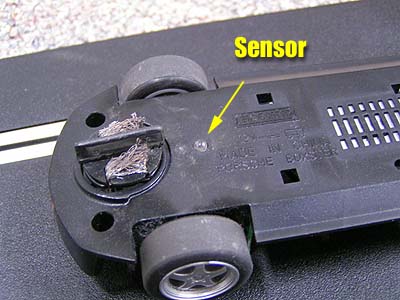
Scalextric will be offering these circuit boards and sensors separately to convert other models for their system, and many enthusiasts feel this is a very important feature. However, over time there will be many models released that come ready to run in digital form and I will just wait for them for the most part. Digital racing can be very fast and sometimes even brutal on your models, and I am not ready to convert some of my favorites just to see them get hammered on the race track...I do that enough in traditional racing. However, if you decide to go strictly digital, then the option of converting other models might be more important.
It also is worth mentioning that you can take these models and place them on traditional track and they function just as they would if they were regular cars and I thought this was a nice feature.
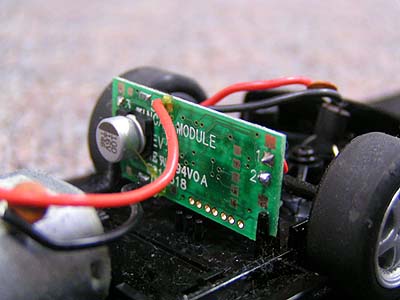
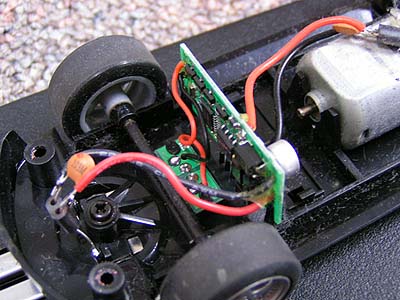
Controllers
The controllers gave us decent response and seemed to have slightly better control factor than a traditional one. On the back of the controller there are 2 buttons. The small round button is to activate the lane changing crossovers, while the larger one is for braking. This is where I have a slight issue with the system. You have a choice inside the power base/control unit to select either no braking, dynamic (automatic like we are used too) ,button activated, or both button and dynamic. As important as braking has been identified in our hobby, and it now comes standard on the traditional Sport system, I would think that the braking would be standard here as well. These braking choices might sound good, and perhaps to some people, having these options are. But simply having more features doesn't always mean it is better. It is the application of these features that tells the tale for me.
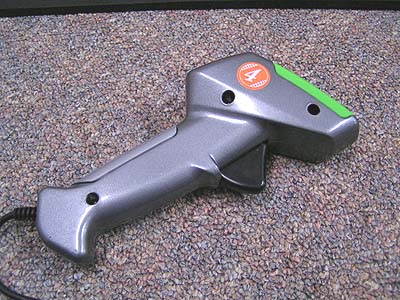
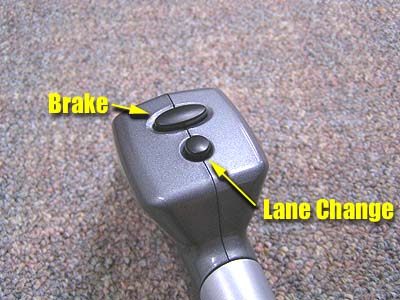
During racing, it is one thing to push a button to change lanes and attempt to pass your opponents, but to perform this function and brake at the same time just seemed a little too much. There isn't much time to think about pushing 2 buttons while your diving into the corner and trying to beat your opponent. Of course my opinion might be due to my old reflexes slowing down, but my opinions are not formed on just myself. I had other enthusiasts help me test this system and get feedback from them, and not all, but most felt the same way. Out of the box our system was set for no brakes, which means you must go through the menu and assign what braking feature you want per each controller. I just feel this is a little too much to go through just to activate a feature that has long been an industry standard. In addition, the button braking feature is more of an on-off switch than a brake. When activating this feature, pressing the button literally stops your car completely and really isn't braking at all to me. However, in fairness this is a digital racing system and there are going to be things we must do in order to enjoy the benefits of it. It might seem a little much to me given my experience in traditional racing, yet others just joining us in the hobby might have no problems.
Our set came with the cars pre-programmed for controllers 1 and 2. If you add more cars and controllers, they must be programmed for those particular cars. For example, if you insert a controller into socket #3, you must go into the control unit menu and while following the instructions, activate the car to that controller.
Changing Lanes
Lane changing is done by use of curved track with 2 switches. One switch is powered while the other just moves to accommodate the cars. These track sections worked perfectly and seem to conduct good power through the rails. When you approach the turn, simply press and hold the small button on the back of the controller before you reach the half straight with the sensor inside. When you press and hold the button, the sensor eye of the car passes over the sensor in the track, and the gate of the curve moves to direct you. After some practice you can start to get the feel of this type of racing.
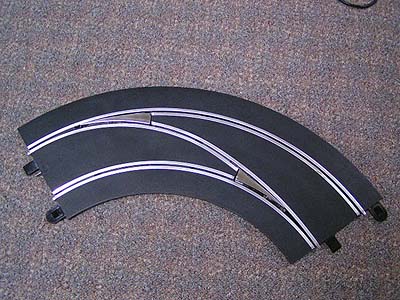
However, I do hope though that Scalextric decides to make sections like this out of straight track. In their efforts to create a more realistic racing experience, it only makes sense to have straights with this option. I observed some racers on this system and they had a difficult time slowing down to change lanes and trying to keep enough speed into the tighter turn to pass. I realize that this is supposed to create a "true racing line" but although this sounds good, application again comes into play. To put it a little more clearly...the "hard part" in slot racing is the curves. I see many beginners (and veterans too) that have a hard enough time keeping their car in the slot through corners now, let alone trying to change lanes and pass. Again, this is just my own personal opinion and you might feel differently.
Having only one radius of turn might also become an issue if the digital systems catch on. I hear and read every day that enthusiasts want flexibility in there layout designs and can see where they will want broader radius curves produced with this option. If the need for them arises, I am sure we shall see them in the future.
The lane changing curves are available in 4 choices: Lane Change + Sensor Track (out to in right hand), Lane Change + Sensor Track (out to in left hand), Lane Change + Sensor Track (in to out left hand), Lane Change + Sensor Track (in to out right hand)
Race Modes
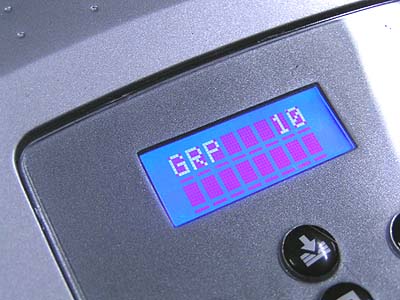
The power base/control unit also has many race modes to choose from and given your involvement in the hobby will dictate if you appreciate them or not. These are the modes according to Adrian Norman of Scalextric published on the Scalextric public forum:
1/ Grand Prix: A standard format that most will
recognize. Laps left in the race and your current race position are displayed
each time your car crosses the Finish Line.
2/ Endurance: Displays time left in the race (displayed in HH:MM:SS format) and
flashes race position when car goes past.
3/ Rally: Allows one car per session to set a race time over a user defined
number of laps. Display shows time down to a mille-second.
4/ Pursuit: An excellent game where you simply have to lap your opponent/s. Can
last a few laps or go on for hours. Display shows race leader and the time gap
between you and leader.
5/ NASCAR: Similar to Grand Prix but has more relevance when used with the PC
software to be released later.
6/ Arcade: The game idea is to complete a lap before the user set time runs out.
Each subsequent lap has a shorter time in which to complete the lap. The display
shows the time left to complete check point (lap), and finally (when time runs
out) the number of lap you managed to amass before power is automatically cut to
your car to indicate that time has run out.
7/ Qualify. An easy way to prepare your
race grid. This mode allows you to set a number of laps and then to set your lap
times. The display shows your Best lap and Last lap.
Race parameters that can be changed are:
Laps -1 to 65000
Time - 1 to 65000 (hours, minutes or seconds)
Jump Start Penalty - 1 to 60 seconds.
Race end mode: All cars complete set laps OR first car to complete ends the race
as remaining cars pass the Finish Line.
Power Cut mode: Live start/finish , Dead start/finish, Live start with Dead
finish.
False Start - On or Off
Final Thoughts
I want the reader to realize that I have no intention on changing over to digital racing totally. I do not feel that it will replace our traditional slot racing hobby, rather it just compliments it. In my opinion, digital racing is a whole different hobby than the one we are used to, and racing rules, conduct and overall car and track set-up will have to be changed accordingly. I do however plan on having a layout to utilize digital racing as it is some great fun when you are looking for something a little different. Due to the elevated level of complexity in these systems, small children will certainly need help getting started. Mom and Dad will most likely have to program and set-up the system before operation so if you are a parent, please keep this in mind.
If you are thinking about going digital, or just to have one to accompany your traditional set, the Scalextric Sport Digital System functions as intended and provides a good digital racing experience. As with most track systems and cars in our hobby today, this set provided us with a decent fun factor, and fun is what this hobby is all about.
-Harry
As always feel free to contact me about this article or just the hobby in general at harry@homeracingworld.com, or better yet drop into our Message Forum and share your thoughts with other enthusiasts!
Thanks go to Scalextric-USA for providing us with this model.